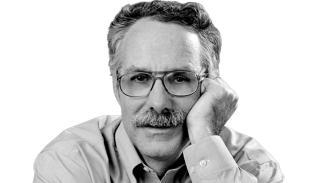
[OP-ED]: The middle-class comeback is real
On this Labor Day, the American middle class survives. Indeed, it’s expanding. That’s not the conclusion of some arcane scholarly study. It’s the judgment of…
Public opinion polls depict the change. In its surveys, Gallup regularly asks people to report their social class. They are given five choices: upper class; upper middle; middle; working; and lower class. In 2006, before the recession, 60 percent of Americans identified themselves as either middle or upper middle class, while 38 percent chose working class and lower class. Only 1 percent put themselves in the upper class.
The 2008-09 financial crisis and the Great Recession demolished these long-standing class patterns, according to the same self-identifying Gallup polls. The middle class shrunk dramatically amid high unemployment, home foreclosures and heavy debts. As late as 2015, the country was almost evenly split between those in the middle and upper middle classes (51 percent) and those in the working and lower classes (48 percent).
No more. In its latest poll on class identity, done in June, Gallup found that 62 percent put themselves in the broadly defined middle class, while only 36 percent classified themselves as working class or lower class. The shifts, said Gallup, began in 2016 and demonstrated “that subjective social class identification has stabilized close to the prevailing pattern observed before 2009.”
This is no fluke.
The temptation is to dismiss the Gallup results as an outlier. Don’t. Karlyn Bowman, the polling expert at the right-leaning American Enterprise Institute, spends her time searching for opinion trends. She finds that countless polls tell a similar story. People are more optimistic. Many polls have, like the survey on class, returned to pre-crisis patterns. “We’re back economically” is how she puts it.
Consider trends from three corroborating polls:
--Jobs are more plentiful. A Gallup poll in August found that 59 percent of respondents thought it was a “good time to find a quality job.” In 2009 and 2010, this rating hovered around a meager 10 percent.
--More people feel they’re getting ahead. In July, 42 percent of respondents to a Fox News poll reported personal gains, up from only 23 percent in 2008 and beating the previous peak of 41 percent.
RELATED CONTENT
--Most workers do not believe their jobs will be outsourced abroad, contrary to much commentary. A Gallup poll this year reported that nine of 10 workers feel unthreatened by outsourcing.
It is not that U.S. workers have no worries. But job growth, up by 17 million since the recession-low point, and wage gains have reduced anxieties.
Indeed, wages for many middle-class workers may be understated. Government figures indicate that median weekly earnings grew almost 2 percent annually from 2012 to 2016. But these numbers are depressed by the retirement of well-paid baby boomers and their replacement by lower-paid, younger workers. When economists at the San Francisco Federal Reserve eliminated these effects, median wages grew nearly 4 percent annually for continuously employed full-time workers.
All this is reassuring. Middle-class values of order, predictability and personal responsibility have not entirely vanished. People could repay debts or add to savings. The University of Michigan Survey of Consumers reports that half of households say their “finances had recently improved, the best reading since 2000,” notes director Richard Curtin.
Just how this new middle-class confidence fares in the next (inevitable) recession is unknowable. Meanwhile, it poses two immediate questions. Has it raised President Trump’s popularity? And second, has it reduced pessimism about American institutions, from Congress to the media? The answer to both seems to be “no.”
Here’s how the CBS News Poll assessed the effect on Trump in a recent release: “President Donald Trump’s approval rating is unchanged from June and remains at 36 percent, while favorable views of the U.S. economy continue to soar to heights not seen in more than 15 years. ... Americans say they’re evaluating him more on culture and values than on how they’re faring financially.”
As for an uplifting effect on other American institutions, there isn’t much yet. Gallup asks respondents whether they have “quite a lot” or “a great deal” of confidence in 14 institutions. The average level was 35 in June; Congress was 12, internet news 16 and big business 21. The highest rated institution was the military at 72, followed closely by small business at 70.
A successful America requires a large -- and largely successful -- middle class. The middle-class revival is evidence of optimism. The lingering question on this Labor Day is whether the revival has staying power. Or will memories of the Great Recession come back to haunt us?










LEAVE A COMMENT:
Join the discussion! Leave a comment.